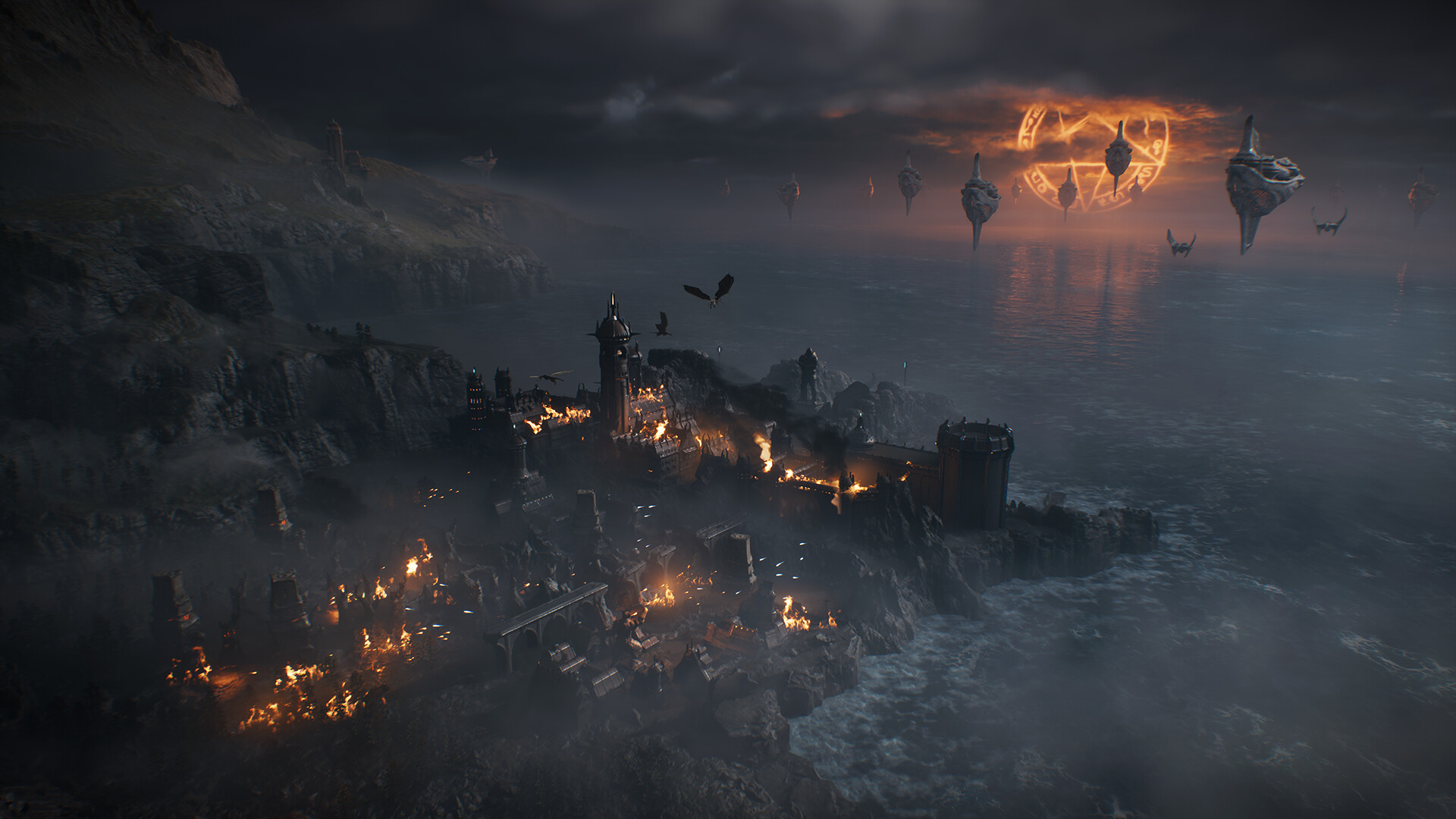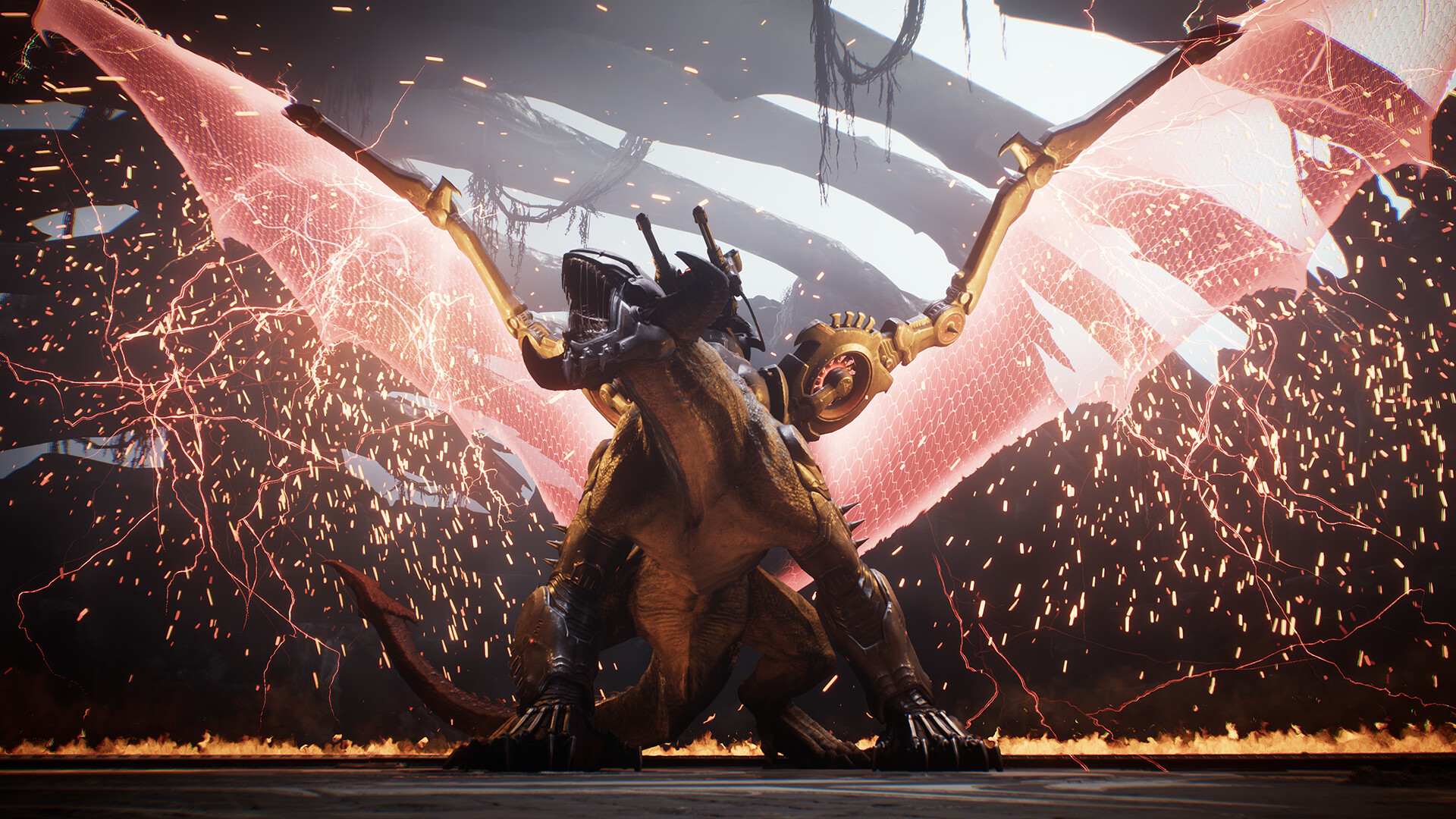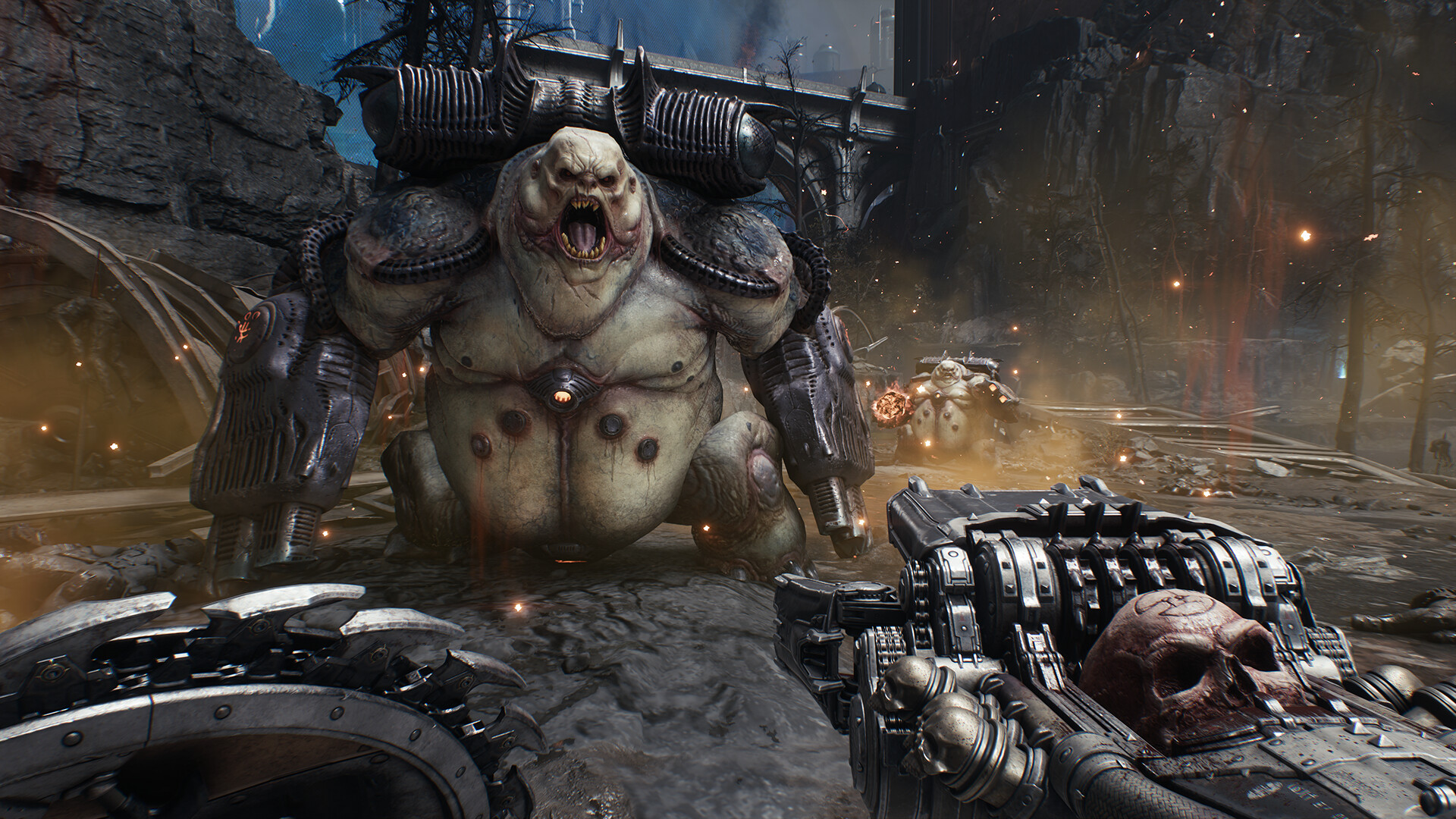
DOOM has always been about embracing a power fantasy, and DOOM: The Dark Ages turns the dial all the way up to eleven. While DOOM 2016 made you feel like an efficient killing machine, and DOOM Eternal elevated you to an unstoppable force of nature, DOOM: The Dark Ages bestows upon you the mantle of a god. The sheer sense of power this game provides is almost overwhelming, and for the most part, utterly exhilarating. However, this godlike experience isn’t without its minor caveats.
Why insist on a story?
This installment marks a departure, or perhaps a misguided attempt, to weave a genuine narrative tapestry around the brutal demon-slaying action we’ve come to expect. Aside from DOOM 3’s more horror-centric approach, the story in previous DOOM games has always been secondary, if not completely absent. After enduring the narrative of The Dark Ages, I find myself wishing they’d stuck to that tradition. While the medieval space setting is undeniably cool, the convoluted lore surrounding the trilogy, coupled with the “prince of hell” storyline, feels oddly cringe-inducing and ultimately detracts from the overall experience. To truly savor this game, you might be best served by skipping the cutscenes and leaving the lore unexplored.

Shield us from hell
DOOM, at its core, is and always has been a gameplay-centric experience. Thankfully, DOOM: The Dark Ages provides a plethora of new and satisfying ways to slaughter demons, most of which are incredibly fun. This feels like a more grounded experience than the previous two entries, drawing inspiration from the older DOOM titles. Expect to spend a significant amount of time on the ground, engaging in visceral combat that involves shooting, dodging, blocking, and parrying.
The most significant addition to DOOM: The Dark Ages, aside from nuanced movement, is undoubtedly the shield. This feature is bound to be divisive; you’ll either love it or hate it. I, for one, landed firmly in the ‘love’ camp, considering it the best thing to happen to the franchise since its reboot. When you fall into the game’s rhythm, a deadly dance of parrying shots from all directions, shield-bashing hordes of enemies, and delivering devastating flail strikes to stunned behemoths while simultaneously launching your shield at another hulking baddie, you’ll find yourself having the time of your life. The game offers a wide array of weapons, each with its unique appeal and effectiveness. However, no matter how visually impressive or mechanically satisfying they may be, none can quite match the sheer power and tactical versatility of the shield.
The game also throws in segments where you get to pilot dragons armed with laser cannons and giant mechs to battle colossal demons. While this might seem like a natural extension of the game’s power fantasy on paper, it ultimately diminishes the freedom that defines the rest of the experience. The combat in these sections, despite looking visually spectacular, lacks the satisfying weight and responsiveness of the core gameplay. Furthermore, the repetitive animations involved in landing the dragon or executing finishers with either the dragon or mech quickly lose their initial allure, becoming tedious after the first few instances.

A mixed bag of levels
DOOM: The Dark Ages presents a mixed bag in terms of level design, offering both moments of brilliance and instances of frustration. Running down claustrophobic corridors, obliterating everything in your path, evokes the spirit of classic DOOM and works exceptionally well. However, the open areas prove to be a double-edged sword. On one hand, navigating vast landscapes teeming with demons, jumping around freely and unleashing a barrage of weapons and abilities, can feel like the pinnacle of the DOOM experience. On the other hand, the frequent backtracking required between these areas can be disorienting, making it difficult to find your way and disrupting the game’s flow. This ultimately undermines the sense of momentum that the game thrives on.
A lacking soundtrack
DOOM: The Dark Ages heavily embraces its dark, demonic art style, which looks fantastic and perfectly complements the exceptionally bloody gameplay. While the game boasts impressive visuals, the predominantly brown and excessively dark color palette prevents it from truly standing out in a visually exciting way. The soundtrack, a highlight of the 2016 reboot, regrettably falls short in The Dark Ages. It feels bland and uninspired, lacking the driving energy and memorable themes that defined its predecessor, contributing to a slight sense of disappointment.

Conclusion
DOOM: The Dark Ages equips you with a devastating arsenal of weapons and abilities that are both fun to use and visually impressive. The core gameplay, a relentless dance of death, feels more satisfying than any other shooter on the market. The addition of the shield injects a breath of fresh air into the DOOM formula. However, the game is also plagued by a muted color palette, a generic soundtrack, and instances of backtracking that disrupt the flow. Despite these shortcomings, DOOM: The Dark Ages remains my personal favorite in the recent DOOM trilogy, showcasing the franchise’s potential to evolve while staying true to its core identity.

Leave a Reply